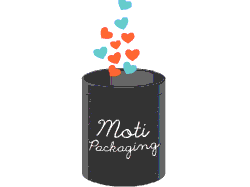Introduction
The manufacturing of caulking cartridges involves a combination of materials science, engineering, and production techniques to create durable containers that hold various types of caulking materials. This process is essential for ensuring that caulking products are delivered effectively to consumers and professionals alike.
Materials Used
1. *Plastic*: Most caulking cartridges are made from high-density polyethylene (HDPE) or polypropylene. These materials are lightweight, resistant to chemicals, and have good barrier properties, making them suitable for storing caulking compounds.
2. *Metal*: Some cartridges, particularly for industrial applications, may be made from aluminum or tin. Metal cartridges provide excellent durability and can withstand high pressure.
3. *Sealants*: The caulking materials themselves can be acrylic, silicone, polyurethane, or butyl rubber, each chosen based on the intended application.
Manufacturing Process
1. *Material Preparation*: Raw materials, such as plastics or metals, are sourced and prepared. For plastics, this may involve pelletizing, while metals are typically rolled into sheets.
2. *Molding or Shaping*:
– *Plastic Cartridges*: The plastic is heated and injected into molds to form the cartridge shape. This process is known as injection molding. Once cooled, the cartridges are ejected from the molds.
– *Metal Cartridges*: Metal sheets are cut and formed into cylindrical shapes using processes like stamping or drawing.
3. *Nozzle Production*: Nozzles are created separately and may be made from the same plastic material. They are designed to fit securely on the cartridge and allow for precise application of the caulk.
4. *Assembly*: The nozzle is attached to the cartridge, often using an adhesive or by heat sealing, ensuring a tight fit that prevents leakage.
5. *Filling*: The cartridges are filled with the chosen caulking material. This is done in a controlled environment to ensure consistency and prevent contamination. The filling process may vary depending on the type of caulk, with some requiring specific temperature controls.
6. *Sealing*: After filling, the cartridges are sealed with a cap or a plug to prevent leakage and maintain the integrity of the caulk.
7. *Labeling and Packaging*: Cartridges are labeled with information such as usage instructions, safety warnings, and product specifications. They are then packaged for distribution, often in bulk for retail or direct sales.
Quality Control
Quality control is a critical aspect of caulking cartridge manufacturing. This includes:
– *Material Testing*: Ensuring that the raw materials meet industry standards for safety and performance.
– *Dimensional Checks*: Measuring cartridges and nozzles to confirm they meet specified dimensions for compatibility with caulking guns.
– *Leak Testing*: Checking filled cartridges for leaks to ensure product reliability.
– *Performance Testing*: Evaluating the caulking material for adhesion, flexibility, and durability under various conditions.
Industry Trends
– *Sustainability*: Manufacturers are increasingly focusing on using recycled materials and reducing waste in the production process.
– *Innovation*: Advancements in materials and manufacturing technology are leading to more efficient production methods and improved product performance.
– *Customization*: There is a growing demand for customized caulking cartridges tailored to specific applications, including specialty formulations for unique environments.
Conclusion
The manufacturing of caulking cartridges is a complex process that combines material science and engineering with a focus on quality and efficiency. As the demand for high-quality sealing solutions continues to grow, manufacturers are evolving their practices to meet the needs of consumers and professionals alike, while also embracing sustainability and innovation.
